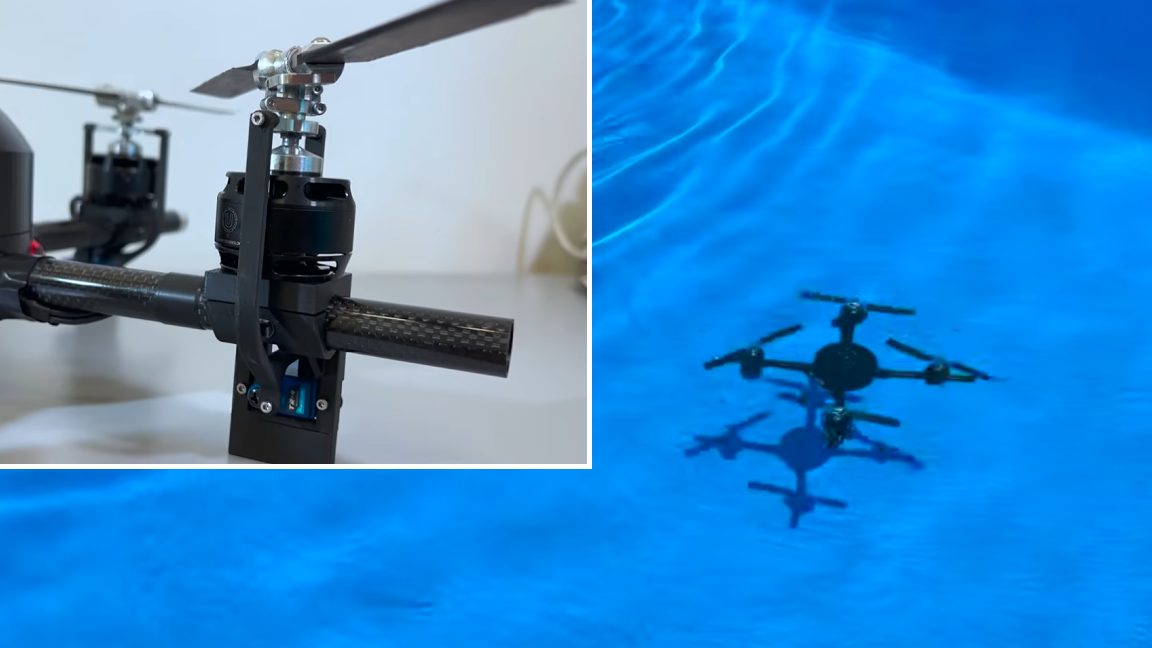Students 3D print drone that can swim underwater and fly through the air — 'variable-pitch propeller system' paves way for amphibious breakthrough

We've covered all sorts of amazing drones here at Tom's Hardware — most of them custom-designed with amazing finesse. Today is the first time we've ever covered a drone quite like this. Students Andrei Copaci, Pawel Kowalczyk, Krzysztof Sierocki, and Mikolaj Dzwigalo from Denmark's Aalborg University have 3D printed a custom drone that is not only capable of flight but can also be piloted underwater.
These features aren't independent options. Rather, the drone seamlessly jumps between flight and aquatic mode as needed. The duo released a video showing off what it's capable of, and in it, we see the drone flying above a pool before crashing into the water's surface. It then moves about the pool before reemerging to fly in the air again.
This project, while demonstrating incredible capabilities, is still in early concept stages. This project is a one-off, so don't expect to buy one of these anytime soon. However, this is an amazing proof-of-concept that shows how easy it is for makers to create something so innovative with readily available tools and hardware.
The drone is able to pull off the incredible transition using what the team calls a "variable-pitch propeller system". In short, this means that the propeller blades automatically adjust to optimize for whatever environment they're operating in—water vs air. When flying through the air, the propeller blades are angled with a higher pitch.
When the drone is submerged, the blades' pitch is lowered to help improve efficiency while piloting underwater. This is accomplished by reducing the amount of drag caused by the propeller blade angles. The students also utilize reverse thrust to improve mobility when moving through tight spaces underwater.
If you want to 3D print your own drone, there are tons of options out there to follow along with at home. However, you won't get very far without at least a 3D printer. If you're new to the hobby and want to get started, check out our list of best 3D printers to see what we recommend and what specs to look for when shopping.
Follow Tom's Hardware on Google News to get our up-to-date news, analysis, and reviews in your feeds. Make sure to click the Follow button.
Get Tom's Hardware's best news and in-depth reviews, straight to your inbox.

Ash Hill is a contributing writer for Tom's Hardware with a wealth of experience in the hobby electronics, 3D printing and PCs. She manages the Pi projects of the month and much of our daily Raspberry Pi reporting while also finding the best coupons and deals on all tech.
-
QuarterSwede The mechanical linkage is so simple, which means it’s viable. I’m sure it took a bit to get the software right for water to air transition, it’s so smooth! Hope they patented the crap out of it. I can see ocean liners, military crafts using this to do visible inspections. Genius.Reply -
408nafo I told yall them "tic tac" UFO's were just our NAVY testing out our new hypersonic drones that are both aquatic and full flight,to go after Putin's Poseidon torpedoes and what not.Reply